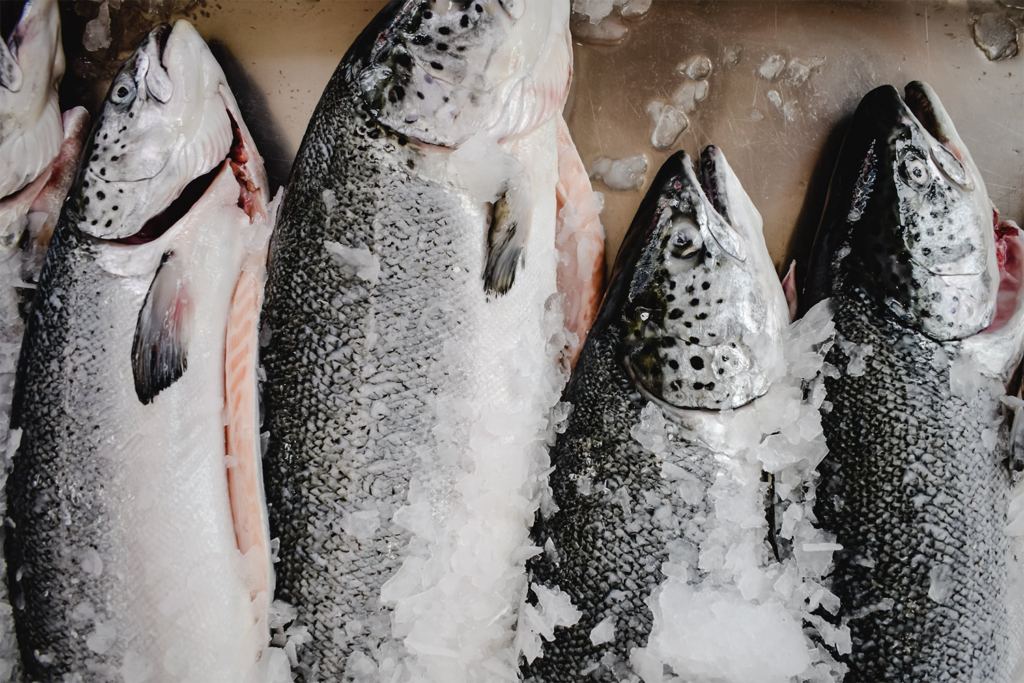Hybrid flow-through systems could transform aquaculture by boosting efficiency and sustainability but require significant investment and regulatory support

Hybrid flow-through systems (HFS) could transform aquaculture – particularly salmon farming – by tackling critical challenges in biosecurity, sustainability and production efficiency. Widespread adoption, however, will require substantial investment and regulatory support, according to a new RaboResearch report.
The report highlights that hybrid flow-through systems are emerging as a practical solution for salmon farmers facing rising demand. The technology bolsters salmon production while reducing disease exposure and environmental impact, enhancing biosecurity and sustainability and positioning it as a game-changer for the seafood industry.
“The limitation of the current, marine cage-based industry is the inability to sufficiently grow supply,” said Gorjan Nikolik, Senior Analyst – Seafood for RaboResearch. “Despite being highly technically advanced, Norwegian salmon farming experienced increasing levels of mortality in both 2023 and 2024.”
These losses stem from lice treatments, which weaken the protective layer on salmon scales, leaving them vulnerable to bacterial infections and jellyfish stings. Hybrid flow-through systems offer a promising alternative by moving salmon farming into contained onshore basins. This approach excludes most pathogens, reduces medication use and improves fish health, leading to faster growth and better feed efficiency.
“Early data shows feed-conversion ratios of 1.1 on HFS farms compared to an industry average of 1.3,” said Nikolik. “These results, combined with a survival rate of 97 percent compared to 83 percent for the net pen industry, suggest that biological performance on HFS farms is superior.”
The economic benefits of hybrid flow-through systems are significant
The enhanced biosecurity of hybrid flow-through systems leads to a higher percentage of superior-grade fish, which can command higher prices in the market. Additionally, HFS farms have a smaller environmental footprint, as they prevent pathogens from entering surrounding waters and significantly reduce the risk of fish escapes.
“Nitrogen levels will be greatly reduced with HFS technology, as the key sources of nitrogen from traditional farms are collected at the bottom of the tank and not released with the water exiting the farm,” said Nikolik.
While hybrid flow-through systems offer significant improvements in biosecurity and sustainability, they do come with an increase in energy consumption. Producing one kilogram of HFS salmon requires between 1 and 8 kWh of energy, depending on the system, whereas traditional marine-based salmon farming has negligible energy use during its marine stage.
“The bottom line is that the good price and the lower biological cost of production outweigh the higher energy cost and should lead to improved profitability,” said Nikolik. However, to make a real improvement in sustainability performance, HFS farms will need to be powered by sustainable sources of energy. “Fortunately, all the current projects we are aware of (in construction or planned) have renewable energy as a source.”
Capital and legislation are essential ingredients for success
According to the report, widespread adoption of HFS technology requires substantial capital investment and supportive legislation. While projects in Norway and Iceland are leading the way, expanding into regions like Chile, the United States and Canada will depend on significant financial backing and regulatory support.
“Our estimates are that the projects currently operating and under construction will need between EUR 2 billion (USD 2.1 billion) and EUR 3 billion (USD 3.1 billion) of capital between 2024 and 2030 for their existing plans,” said Nikolik, who added that a much higher amount will be needed if the large number of conceptual and permitted projects are to become reality. “HFS technology has the potential to transform the salmon farming industry, provided that the necessary capital and legislative frameworks are in place.”
Now that you've reached the end of the article ...
… please consider supporting GSA’s mission to advance responsible seafood practices through education, advocacy and third-party assurances. The Advocate aims to document the evolution of responsible seafood practices and share the expansive knowledge of our vast network of contributors.
By becoming a Global Seafood Alliance member, you’re ensuring that all of the pre-competitive work we do through member benefits, resources and events can continue. Individual membership costs just $50 a year.
Not a GSA member? Join us.
Author
Tagged With
Related Posts

Intelligence
Aquaculture sector enters second half of 2024 with growing demand and normalizing costs: Rabobank
Rabobank predicts improved demand and cost stabilization for aquaculture, despite market uncertainty and ongoing biological challenges.

Intelligence
‘Mixed recovery’: Rabobank forecasts modest growth for shrimp industry in 2024, but global market challenges hinder bounce-back efforts
A new Rabobank report forecasts modest growth for the shrimp industry in 2024, but ongoing global market challenges hinder a full recovery.

Intelligence
Salmon aquaculture to remain strong in 2024, but shrimp sector expected to struggle: Rabobank
Rabobank analysts predict better supply for salmon aquaculture and fishmeal in 2024, but low market prices for shrimp may become “the new normal.”

Intelligence
After a turbulent 2023, ‘signs of optimism’ ahead for global seafood production
Rabobank's annual seafood production report suggests a more optimistic production outlook for 2024 compared to 2023.



